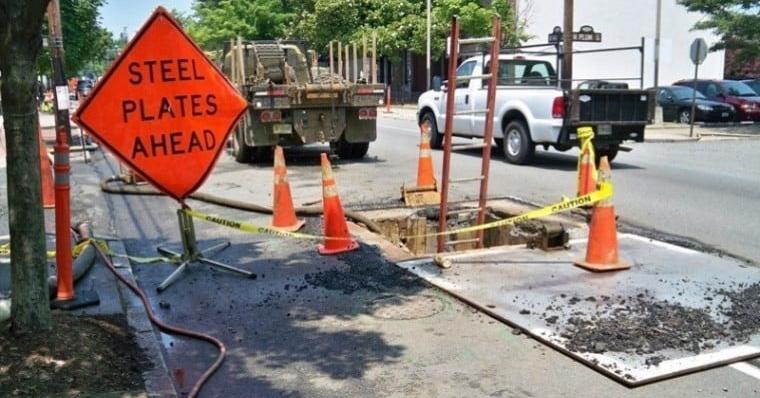Road plates play a pivotal role in construction and infrastructure projects, offering a myriad of benefits that contribute to the efficiency, safety, and durability of roadways. These metal plates, often made from steel or other durable materials, are used to cover excavations, trenches, or other open areas temporarily.
In this comprehensive article, we delve into why road plates are essential and highlight key facts about their usage, benefits, and impact on various projects.
Why Use Road Plates? Facts About Road Plates
The road plates, also known as steel road plates, trench covers, or steel trench plates, serve multiple purposes in the realm of construction and infrastructure development. Here are some compelling reasons why using road plates is essential:
1. Safety Enhancement
Road plates provide a secure and stable surface, preventing accidents and hazards for both pedestrians and vehicles. They cover open excavations, ditches, or manholes, ensuring a smooth and safe passage for everyone.
2. Smooth Traffic Flow
By creating a flat surface over disruptions such as trenches or holes, road plates contribute to uninterrupted traffic flow. This is particularly crucial in high-traffic areas where maintaining a steady flow of vehicles is essential.
3. Infrastructure Maintenance
During infrastructure maintenance or repair projects, road plates offer a temporary solution that minimizes disruptions. They allow work to proceed efficiently while reducing inconvenience to commuters.
4. Versatility
Road plates come in various sizes and configurations, making them adaptable to different project requirements. They can be used in diverse settings, from urban streets to construction sites.
5. Cost-Effectiveness
Using road plates is a cost-effective alternative to permanent road repairs or closures. They provide a temporary solution without the need for extensive construction, saving time and resources.
6. Durability
Constructed from sturdy materials, such as steel, road plates are built to withstand heavy loads, ensuring they remain functional throughout the project’s duration.
7. Erosion Prevention
Road plates shield underlying soil from erosion caused by weather conditions. This protection helps maintain the integrity of the construction site and prevents potential delays.
8. Quick Installation
Installing road plates is a relatively quick process, requiring minimal labor and machinery. This efficiency speeds up project timelines and reduces disruptions.
9. Environmental Impact
Compared to more permanent construction methods, road plates have a lower environmental impact. They can be reused for multiple projects, reducing the demand for new materials.
10. Adaptation to Weather
Road plates offer stability in inclement weather conditions, such as rain or snow. Their anti-slip properties ensure safe passage for vehicles and pedestrians.
Facts About Road Plates
Here are some essential facts about road plates that shed light on their significance and application:
1. Historical Use
Road plates have been used for centuries, with historical records indicating their use during the Roman Empire for road maintenance and military purposes.
2. Weight-Bearing Capacity
Modern road plates are engineered to support substantial weights, making them suitable for heavy machinery, construction vehicles, and even tanks.
3. Anti-Skid Technology
Many road plates feature anti-skid technology, enhancing traction for vehicles and pedestrians, even in wet or slippery conditions.
4. Industry Standards
Road plates must adhere to industry standards, ensuring their quality, durability, and safety. Regulations dictate specifications such as material thickness and weight-bearing capacity.
5. Temporary Solutions
Road plates are designed as temporary solutions, typically used for construction, maintenance, or utility work. They offer flexibility without the permanence of traditional road repairs.
6. Customization
Road plates can be customized to fit specific project requirements. They come in various sizes, shapes, and thicknesses to accommodate diverse needs.
FAQ’s
Are road plates only suitable for construction sites?
Road plates are versatile and can be used in various settings beyond construction sites. They are often employed during road repairs, utility maintenance, and even events requiring temporary road closures.
Can road plates withstand heavy traffic loads?
Yes, modern road plates are designed to withstand heavy loads, including the weight of construction vehicles and machinery. Their weight-bearing capacity is engineered to ensure safety.
How are road plates installed?
Road plates are typically installed by professionals using cranes or other heavy equipment. They are carefully positioned to create a secure and flat surface over excavations or trenches.
Are road plates environmentally friendly?
Yes, road plates contribute to environmental sustainability. They can be reused for multiple projects, reducing the demand for new materials and minimizing waste.
What materials are road plates made from?
Road plates are commonly made from materials like steel or aluminum. These materials provide the necessary strength and durability to support heavy loads.
Can road plates prevent accidents?
Absolutely. Road plates create a smooth and secure surface, reducing the risk of accidents caused by uneven terrain or open excavations.
Conclusion
Road plates play a crucial role in ensuring the safety, efficiency, and progress of construction and infrastructure projects. Their versatility, durability, and cost-effectiveness make them an invaluable asset to industries worldwide. From enhancing safety to promoting smoother traffic flow, the benefits of using road plates are undeniable. As technology continues to advance, road plates are likely to evolve, further optimizing their contribution to the development of roadways and infrastructure.

